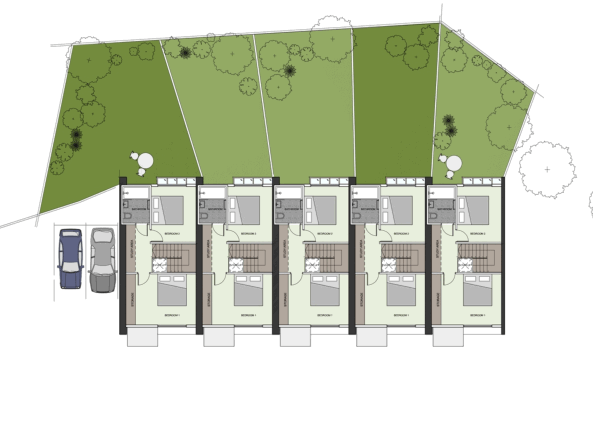How do I inform my neighbour of my proposed works?
If you are carrying out works to a party wall or are excavating in close proximity to next door then you must inform your neighbour (Adjoining Owner) of your intentions before carrying out the work. The best way to start the process is to engage the services of a qualified surveyor to prepare and serve the necessary notices in advance of the works commencing.
Notices for works to a Party Wall must be served two months before they commence or one month if you are excavating foundations within a certain distance of your neighbour’s building or structure.
After establishing the works which are notifiable under the Act, we will identify the correct names of your neighbour and serve the appropriate notices. On receipt of the notice, your neighbour can either consent to the works or dissent and appoint a surveyor. At this stage you should be aware that you will be responsible for your neighbour’s surveyor’s fees except in rare instances.
Once your neighbour’s surveyor is appointed we will then prepare a schedule of condition of the adjoining premises and draft the party wall Award. Depending on the scale of the works it normally takes between 3 – 4 weeks, following service of notices, to agree the party wall Award which contains the design drawings, schedule of condition and any relevant supporting documentation. The Award is then prepared in duplicate and signed by the appointed surveyors before it is served on both parties. It should be noted that even if the award is agreed, the works cannot commence until the statutory periods have run. To overcome this, the Adjoining Owner can agree to waive the period in writing.
In short, a Party Wall Award is a legally binding document which settles the difference between the parties and contains clauses which protects both the Building Owner and the Adjoining Owner. For example, the Award would normally stipulate hours of noisy works on a party wall or provide directions for resolving any damage which occurs as a result of the works. Once received, the Building Owner and the Adjoining Owner have 14 days to appeal the Award in the County Court should they feel it has been made improperly or incorrectly.
Finally, once the works are complete, the surveyors check off the schedule of condition to ascertain if any damage has been occasioned to the neighbours’ property. If damage has been caused then the surveyors agree the remedial works required. Once they are completed the Award can be discharged.

